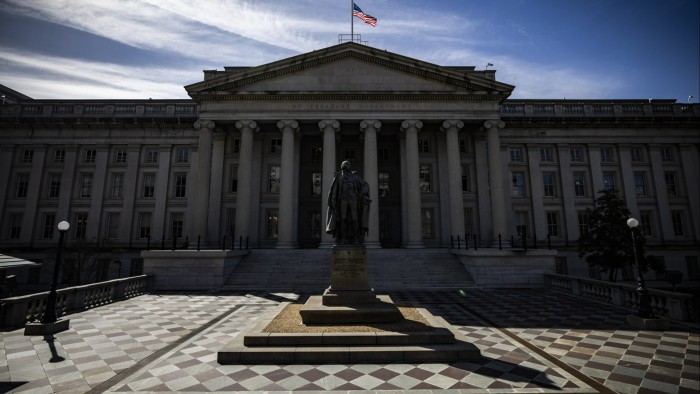Hedge funds stung by bond market fallout from Silicon Valley Bank collapse

Simply sign up to the Hedge funds myFT Digest -- delivered directly to your inbox.
A violent move in government bond markets sparked by the collapse of Silicon Valley Bank has upended one of the most popular hedge fund trades of recent years.
The bank’s failure on Friday sparked concerns that the US Federal Reserve may need to shy away from aggressive rises in interest rates to avoid putting the country’s broader financial sector under strain. It also pushed some investors to look for safe retreats. Both factors sent bond prices soaring.
Analysts and investors say that swiftly collided with a huge consensus trade in markets that interest rates would keep climbing to combat inflation and bond prices would continue falling — a wager that delivered outsized gains for many hedge funds last year. Now, some of the same macro and computer-driven hedge funds that celebrated a hugely successful 2022 have been caught out, sending some of them to rush out of their positions and amplifying the bond market move.
“The major reversal in Treasuries has proved the inflation trade — once contrarian — was crowded,” said Andrew Beer, managing member at US investment firm Dynamic Beta, adding that funds had been rushing to change their positioning.
Market insiders say this is likely to be a factor behind the massive jump in bond prices on Monday, which sent the yield on the two-year US Treasury note down at the fastest pace since 1987. Volatility in the US government bond market exceeded even the fraught conditions at the start of the Covid-19 pandemic in March 2020 to reach its highest since the financial crisis in 2009, according to the ICE BofA Move index, a gauge of how the premiums investors are willing to pay to shield themselves against market swings.
“It looks like there was some forced buying, because of the sharp nature of the move,” said Gregory Whiteley, a portfolio manager at DoubleLine Capital.
“It was a brutal day,” said one hedge fund executive whose fund lost money on Monday.
Market participants say many hedge funds were forced to exit losing trades in the recent market turmoil. Among those to be hit was Rotterdam-based Transtrend, which manages $5.6bn in assets and lost 9.6 per cent on Monday. Man Group, one of the world’s biggest hedge funds, lost 4.2 per cent in its AHL Diversified fund and 2.2 per cent in its AHL Alpha fund on Friday, when bonds also rallied strongly.
Wagers on rising yields handed big gains last year to managers such as billionaire trader Chris Rokos, whose Rokos Capital posted a 45.5 per cent gain, as the US two-year yield soared from 0.73 per cent to 4.4 per cent, while Said Haidar’s Haidar Capital made nearly 200 per cent, helped by bond bets.
In the opening weeks of 2023, many speculators had maintained the view that the price of the two-year US Treasury note — which is sensitive to interest rate shifts — would fall further, according to data from the Commodity Futures Trading Commission. In mid-February, the scale of these positions stood at an all-time high, figures from the regulator show. Funds were running more than twice as many bets on the US two-year note falling as rising, while in the 10-year it was more than three times. A cyber attack at data group Ion in January means that data has been delayed, but the violent moves in the rates market suggest that position had been maintained ahead of the collapse of SVB.
Many computer-driven funds that try to latch on to trends in financial markets had long been wagering against Treasuries and other government bonds as prices have tumbled. According to Société Générale’s Trend Indicator, which models the bets taken by these quantitative funds, they have been running negative bets on the US two-year Treasury for almost two years, and were short other major global government bonds too.
While some managers have been caught out by the sharp falls in bank stocks, much of the pain for hedge funds has been centred on bonds, whose prices are closely tied to interest rate shifts. Even while bond yields collapsed on Friday and Monday, equity indices held relatively steady, which some investors believe shows that the move was not driven primarily by fundamental macroeconomic factors.
“People are not articulating a view,” said Christian Kopf, head of fixed income at Union Investment in Frankfurt. “It was forced position adjustment,” he said. When bond prices kicked higher, that tripped up bets on their decline, forcing hedge funds to close them, which in turn pushed up prices and forced more negative positions to fold — a classic feature in fast-moving markets, albeit on a grand scale.
Treasury yields rebounded on Tuesday, though they have erased only a small part of the dramatic drop over the past few days. The scale of Tuesday’s move — a 0.3 percentage point move in the two-year yield — suggests that the initial declines may have been exaggerated by speculative positioning in markets.
Comments